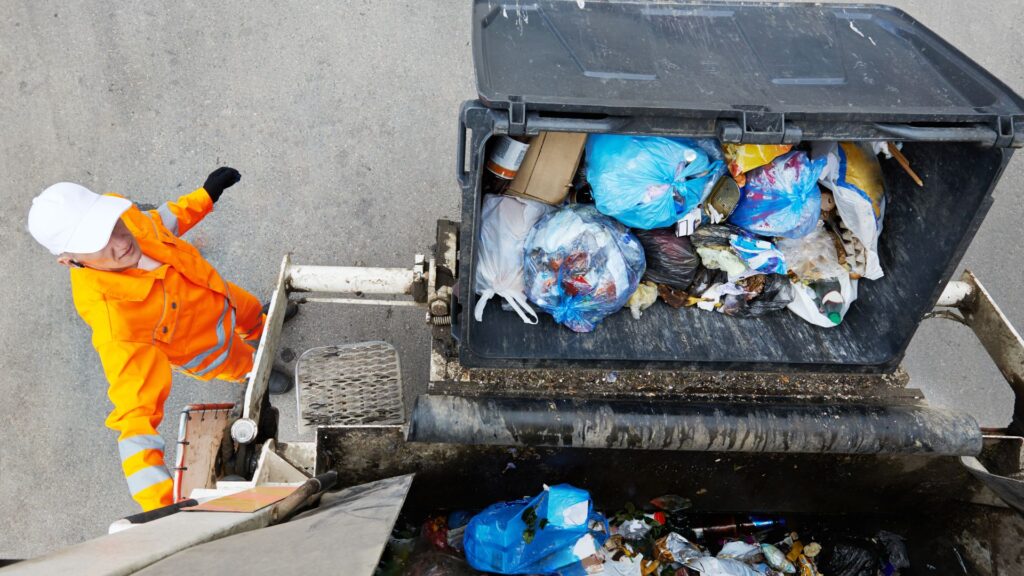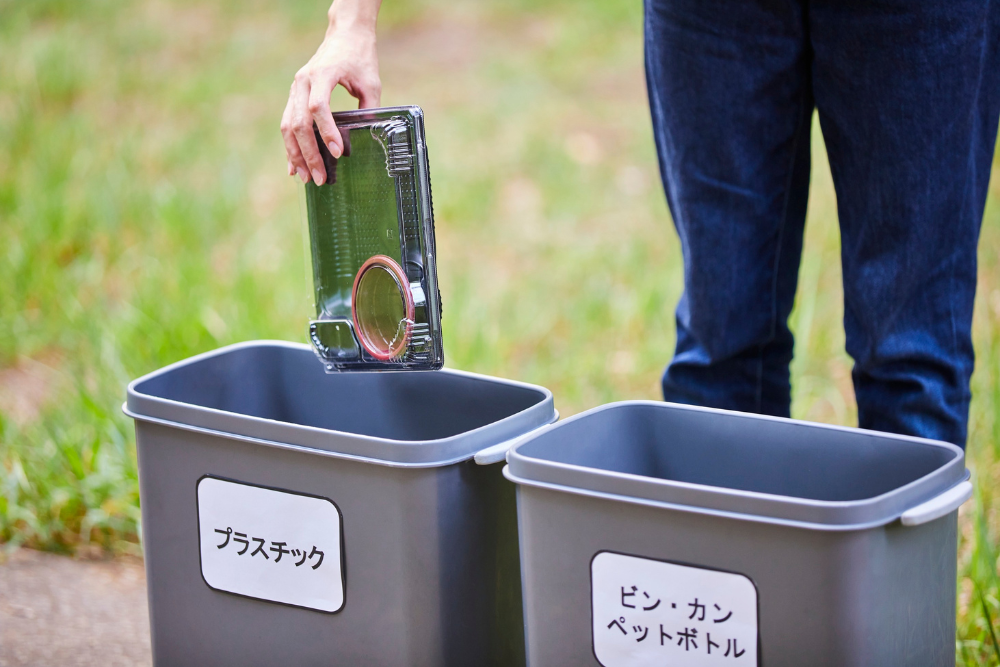
The Environmental Importance of Donating Your Junk Items
September 24, 2025
Eco-Friendly Junk Removal Keeping Your Neighborhood Clean and Green
September 24, 2025How Recycling E-Waste Can Reduce Landfill Overflow
Modern life runs on electronics, from smartphones and laptops to appliances and entertainment systems. Yet as technology rapidly evolves, outdated devices pile up faster than ever, leaving households and businesses with growing heaps of unwanted gadgets. Too often, these items end up in landfills, where toxic substances leak into soil and air, creating environmental hazards. Recycling e-waste offers a better way forward, diverting electronics away from overflowing dumps and into responsible reuse or recovery channels. By embracing sustainable disposal methods, communities can reduce strain on landfills, preserve natural resources, and protect the environment from harmful pollutants caused by discarded technology.
Understanding the Problem of E-Waste Accumulation
Electronic waste has become one of the fastest-growing categories of garbage worldwide. Every year, millions of tons of discarded gadgets are produced, many of which end up in local landfills. These devices contain metals, plastics, and chemicals that do not break down easily, and their sheer volume contributes significantly to landfill overcrowding. Without a proper recycling system, the build-up creates lasting environmental consequences.
This accumulation also has hidden dangers. Inside computers, televisions, and phones are substances like lead, mercury, and cadmium, which can seep into soil and water over time. These toxic elements harm not only ecosystems but also human health when contamination spreads. Recycling e-waste addresses both concerns by diverting materials from landfills and preventing dangerous pollutants from leaking into the environment. By understanding the urgency of the issue, communities are more likely to embrace sustainable practices that slow this growing problem.
The Role of E-Waste Recycling in Landfill Reduction
One of the most effective ways to prevent landfill overflow is by recycling electronics before they reach waste facilities. E-waste recycling involves carefully dismantling devices and sorting components into categories like metals, plastics, and glass. These materials are then sent to specialized facilities where they can be repurposed for new products. This process drastically reduces the amount of bulk that would otherwise take up valuable landfill space.
Landfills are already under immense pressure, and every recycled item counts toward easing that strain. By giving electronics a second life through recycling, communities extend the lifespan of local waste facilities. Fewer items end up buried, which means less land is needed for future dumps. The ripple effect is powerful—less landfill expansion, reduced environmental damage, and more sustainable waste management overall. Recycling e-waste becomes a straightforward yet impactful way to preserve space and protect ecosystems simultaneously.

Protecting the Environment from Toxic Leaks
Landfills are not designed to handle the toxic materials found in electronic devices. When e-waste is dumped, dangerous chemicals can escape as items break down over time. Mercury from screens, lead from batteries, and cadmium from circuit boards all pose serious risks. Once these toxins leach into soil, they contaminate groundwater and nearby ecosystems, spreading harm far beyond the landfill site.
E-waste recycling prevents these hazards by ensuring each component is processed safely. Batteries are removed for special handling, metals are smelted in controlled environments, and plastics are separated for reuse. These careful steps reduce the chance of toxins reaching the environment, keeping communities safer and healthier. Recycling not only protects local habitats but also ensures that future generations inherit land and water sources free from pollution. Choosing responsible e-waste disposal is an investment in long-term environmental health.
Recovering Valuable Materials from Electronics
What many people view as junk often contains hidden value. Electronic devices are packed with precious and semi-precious metals like gold, silver, copper, and palladium. When tossed into landfills, these resources are lost forever, requiring new mining to meet demand. E-waste recycling solves this problem by recovering valuable materials and reintroducing them into the production cycle.
The benefits are twofold. First, recycling reduces the environmental damage caused by mining operations, which often scar landscapes and pollute waterways. Second, it lowers manufacturing costs for industries that rely on these metals, creating economic value from items once considered useless. Even plastics and glass from old devices can be repurposed, reducing the need for new raw materials. By treating e-waste as a resource rather than trash, recycling helps close the loop, ensuring fewer natural resources are wasted while providing benefits for both the environment and the economy.
How Recycling Conserves Energy and Reduces Emissions
Recycling e-waste not only saves landfill space but also conserves energy compared to producing new materials from scratch. Manufacturing metals, plastics, and glass requires massive amounts of energy, especially when sourced from raw materials. By recycling components already in circulation, energy demands drop significantly, leading to lower carbon emissions overall.
This reduction in energy use directly benefits the fight against climate change. Greenhouse gases produced during mining, refining, and manufacturing contribute to global warming. Recycling prevents much of that by reducing the need for extraction and heavy industrial processes. Communities that prioritize e-waste recycling play a role in conserving resources while lowering pollution at the same time. Each device recycled becomes a small but meaningful contribution to reducing the environmental footprint of technology. In a world increasingly reliant on electronics, this approach is essential to building a greener future.
Reducing the Need for New Landfills
As populations grow and technology advances, the demand for landfill space continues to rise. Many communities already struggle with the limited capacity of existing facilities. Building new landfills requires clearing land, disrupting ecosystems, and creating long-term environmental risks. Recycling e-waste helps alleviate this pressure by reducing the volume of garbage that needs to be buried.
When electronics are recycled, they no longer take up valuable space reserved for non-recyclable waste. This allows existing landfills to last longer, reducing the need for expensive and environmentally damaging expansions. Communities benefit from preserved green spaces, lower waste management costs, and reduced pollution. Recycling becomes not just an environmental choice but also a practical solution to managing the growing demands of modern waste.
Strengthening Community Recycling Programs
Recycling e-waste goes beyond individual responsibility—it strengthens the effectiveness of broader community recycling programs. When residents and businesses participate in electronic recycling, it supports local facilities and creates demand for sustainable waste management infrastructure. This collaboration encourages municipalities to expand programs, making recycling more accessible and efficient for everyone.
Community programs thrive when people engage actively. By diverting e-waste from curbside pickups and landfills, households help reduce the burden on municipal systems. Instead, resources are directed to recycling centers where they can be put to better use. Stronger recycling programs also lead to educational opportunities, helping communities understand the importance of sustainable waste management. Over time, this creates a culture of environmental responsibility, where proper disposal becomes second nature.
Encouraging Businesses to Recycle Electronics
Companies are among the largest contributors to electronic waste, as offices frequently update equipment to stay competitive. Computers, printers, and monitors often pile up in storage rooms before eventually being discarded. Encouraging businesses to recycle electronics is essential to reducing landfill overflow. By partnering with professional junk removal services, companies can ensure responsible disposal that aligns with sustainability goals.
Recycling also benefits businesses financially and reputationally. Many organizations seek ways to demonstrate environmental responsibility to clients and customers. Proper e-waste disposal signals a commitment to sustainable practices, strengthening a company’s brand image. Additionally, some recycled materials may offer cost savings when reintroduced into production cycles. By choosing to recycle electronics, businesses not only reduce landfill waste but also support their own operational and ethical goals.
Creating Awareness About the Impact of E-Waste
One of the biggest challenges in managing e-waste is the lack of awareness about its dangers and potential solutions. Many people simply toss old electronics into the trash without realizing the long-term consequences. Education plays a crucial role in shifting this mindset. By spreading knowledge about the benefits of recycling and the risks of improper disposal, communities can encourage more people to take action.
Awareness campaigns help residents understand that e-waste is not just clutter but a significant environmental issue. Information about recycling programs, drop-off centers, and professional services makes it easier for people to choose responsible options. As knowledge spreads, participation grows, leading to stronger recycling efforts and reduced landfill use. Empowering individuals with information is one of the simplest yet most effective tools for tackling the e-waste problem.
Building a Future of Sustainable Technology Disposal
Recycling e-waste today is about more than managing current waste—it’s about shaping future practices. As technology continues to advance, the volume of discarded devices will only grow. Building systems now that prioritize recycling ensures societies are prepared to handle tomorrow’s challenges without overwhelming landfills.
Sustainable technology disposal requires ongoing investment in infrastructure, education, and collaboration between individuals, businesses, and governments. By making recycling a standard practice, communities create a cycle that keeps valuable resources in use and harmful substances out of the environment. It paves the way for a future where innovation and environmental responsibility coexist. Through proactive efforts, the next generation will inherit cleaner communities, healthier ecosystems, and a waste system designed for long-term sustainability.
Conclusion
The growing challenge of e-waste highlights the urgent need for sustainable solutions that reduce landfill overflow. Recycling electronics not only prevents toxic materials from harming the environment but also saves space, conserves energy, and recovers valuable resources that would otherwise be lost. With every device recycled, communities take a step closer to protecting their health, their ecosystems, and their future. Embracing responsible e-waste disposal is about more than tidiness; it is about ensuring long-term sustainability in an increasingly digital world. For residents and businesses seeking professional assistance, North Bay Junk Removal in Santa Rosa, CA, provides expert junk removal services that prioritize eco-friendly practices. Their team is dedicated to reducing landfill waste while offering convenient and reliable solutions for handling electronics responsibly. To make a positive impact today, call 707-478-6817 and take the next step toward cleaner, greener, and more sustainable waste management practices.

